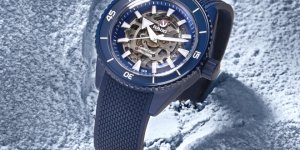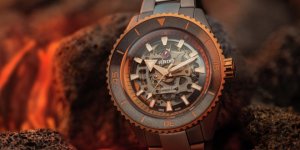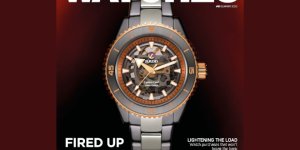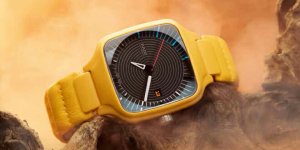High-Tech Shine
The hero of WOW Spring 2020 is the Rado Captain Cook Automatic but Rado demonstrates its mastery of materials with the True Thinline Collection.
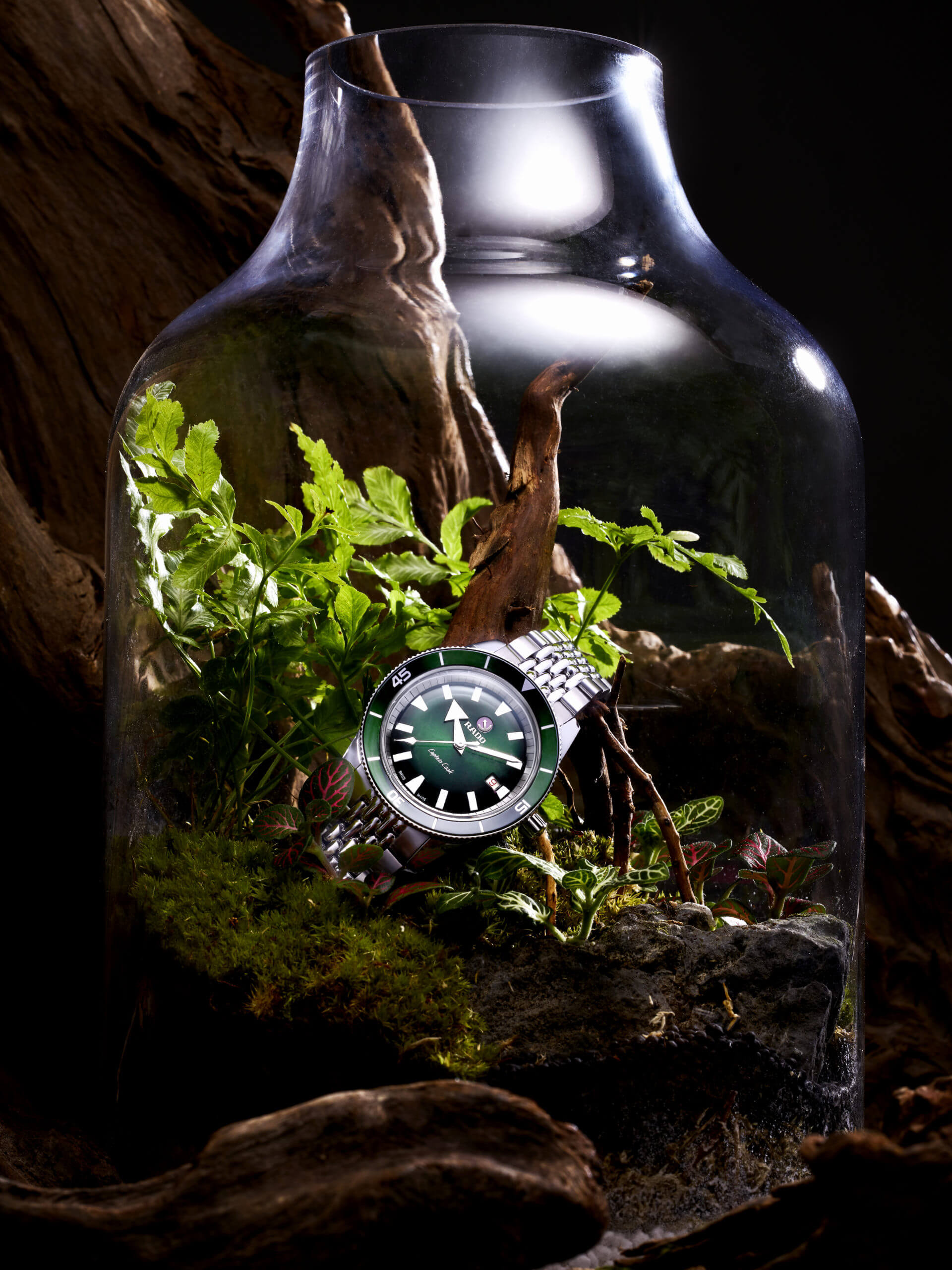
Some watch brands are blessed with names that are well-known, even to people unfamiliar with timepieces. Others have a long and illustrious history, sharing names with major figures in history. Still others are so closely tied to sports or racing that they are virtually synonymous with their sponsorship activities. Indeed, we need not even list examples for any of the above because you probably know what we are talking about. It gets even more interesting – if a little esoteric — when a watchmaking brand is tied very closely to material innovation, as Rado is.
Chances are, if you have heard of Rado then you know that it is intricately tied to the use of ceramics in watchmaking. Those of you who take an interest in the history of watchmaking might also recall that Rado made what it called the world’s first scratchproof watch in 1962.
The DiaStar 1 was made of ultra-tough tungsten carbide, a material so difficult to work that it wore out the very tools that were used to make the cases. Crucially, the watch also introduced sapphire crystal. This marked the true beginning of the brand’s pioneering efforts in making scratch-resistant watches. The DiaStar 1 is typically included in horological milestones of the 20th century, but we are getting excited and racing ahead of ourselves.
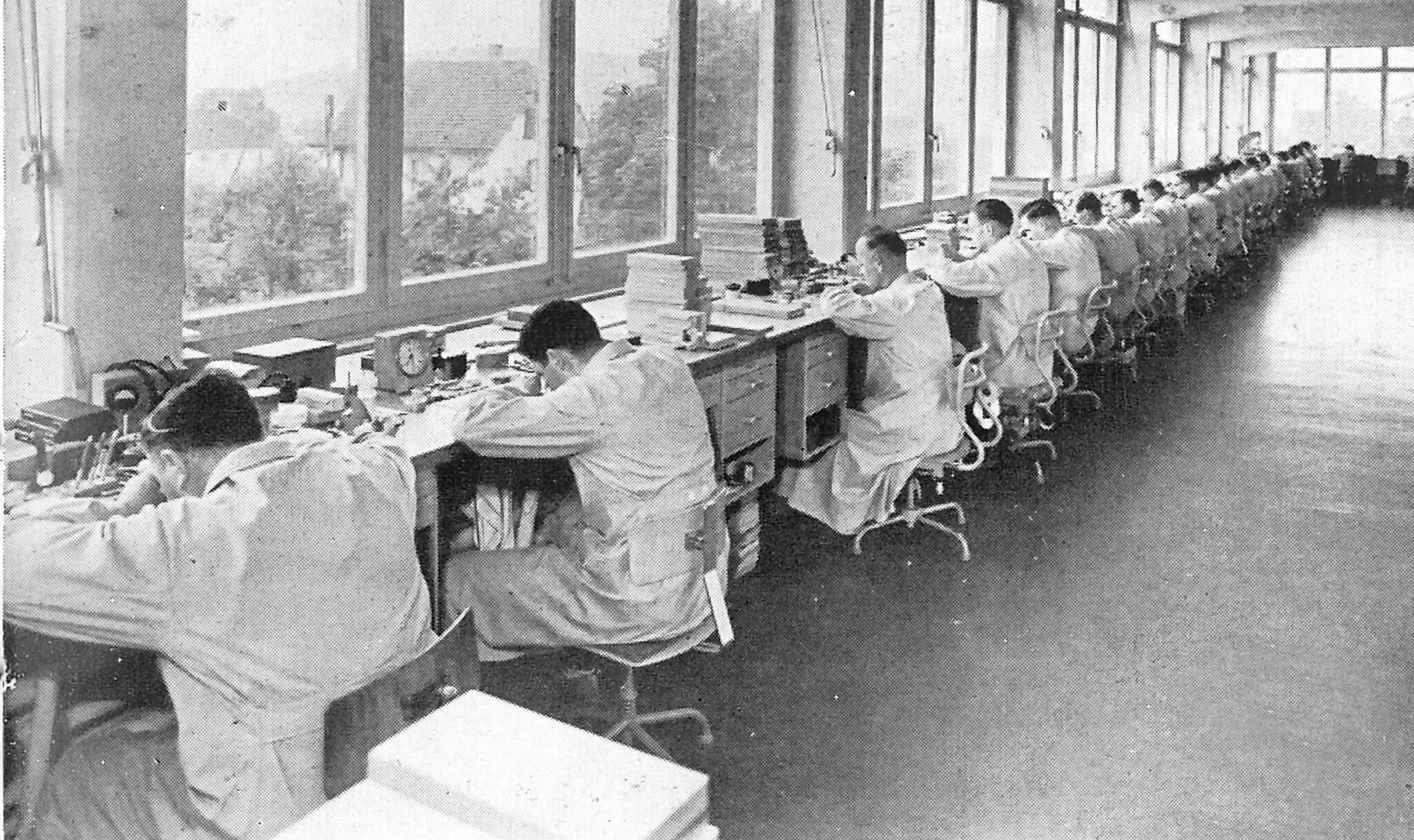
For a brand with more than 100 years of history that is still active today, Rado is actually not that famous. To understand this, a trip through history is required, and this will take a little longer than our usual cover story jaunt. As far as WOW goes, it has been too long since we last went to the deep end of the pool with Rado watches to rediscover the history of the Lengnau-based brand. Happily, the Rado Captain Cook changed all that, thanks in part to the current demand for sports watches of all sorts. We published a little something on this last issue, and took a more leisurely look at the Captain Cook itself. To make a long story short, Rado is a brand on the up-and-up, with the Captain Cook watch the most visible symbol of its hard-won 21st century success.
A FAMILY AFFAIR
Like many Swiss watch brands, the story does not begin this century. Indeed, Rado did not even begin life under that name in 1917. In that year, brothers Fritz, Ernst and Werner Schlup founded the Schlup & Co. watch factory in Lengnau, Switzerland. Even Rado calls this a humble beginning, mostly because the atelier that housed Schlup & Co was a part of the Schlup family home.
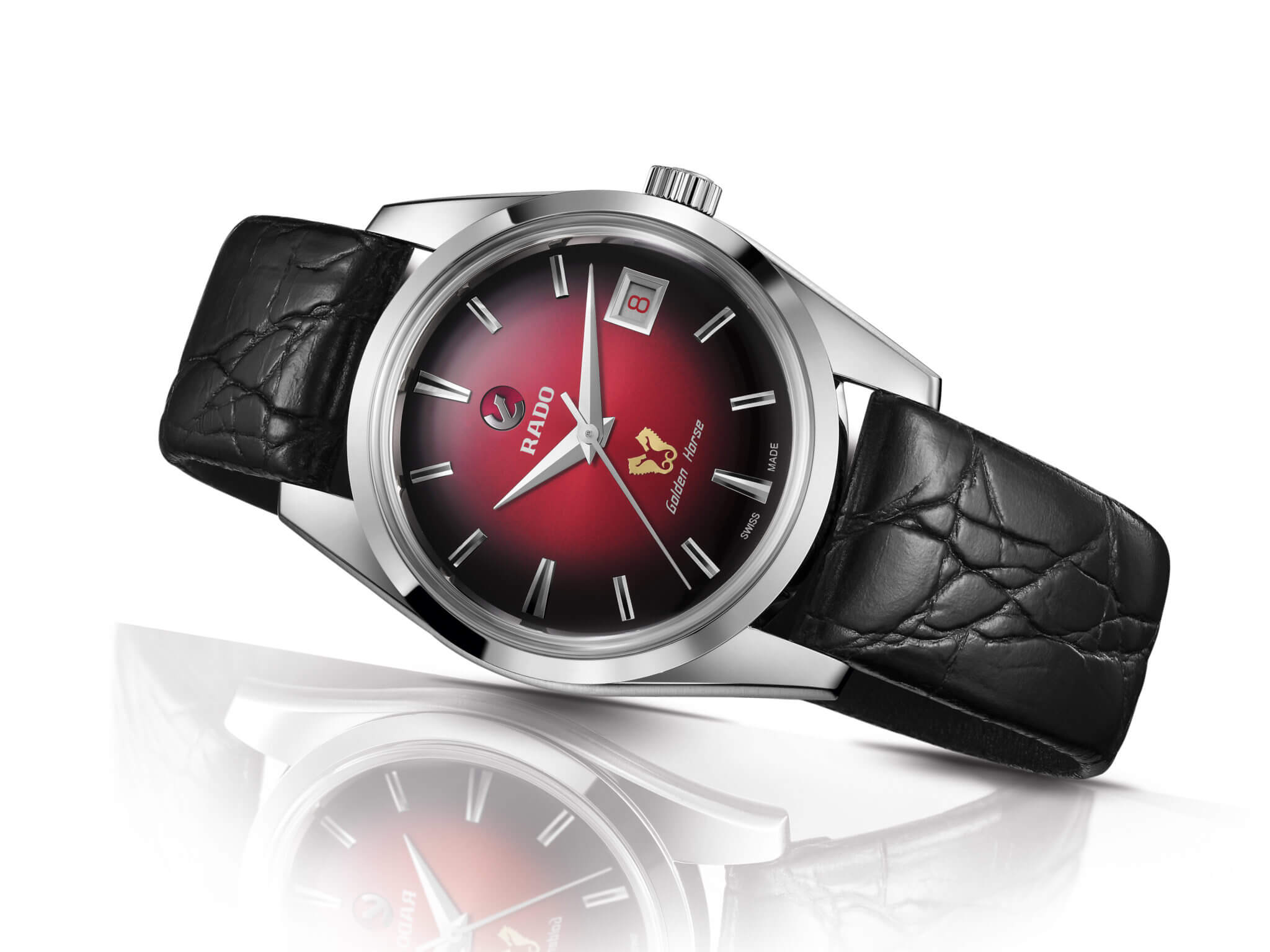
Rado 1957 Golden Horse
An etabliseur focused on mechanical clock and watch movements, the firm did not make wristwatches under its own name. The Rado name first turns up in about 1937, with Schlup & Co. establishing a subsidiary named the Rado Watch Co. Ltd. It would take another 20 years for a watch to be created bearing the Rado name. This was the Golden Horse model of 1957, created to celebrate the 40th anniversary of the company; this was also the moment the firm itself began using the name. More specifically, it was Rado Uhren AG.
The original movement for the Golden Horse was from Adolph Schild and the water-resistant case was in steel. That water-resistance bit was timely and quite fitting, given that the “Horse” part of the name referred to a pair of seahorse appliques facing each other above the 6 o’clock position. Interestingly, Adolph Schild is today a part of ETA, which is part of the Swatch Group, as Rado is. In a way, it remains a family affair, but we digress.
ANCHORS AWAY
The Green Horse collection followed in 1958, marketed on its water resistance rating. This marked the first appearance of a now-familiar sight on Rado watches: the miniature rotating anchor below the 12 o’clock marker. Not only did this end up being the brand’s logo, but it also served to mark when any given watch was ready to be serviced. It was the first such mechanism on a wristwatch in the world. Basically, when the anchor no longer obeyed gravity but remained stationary, it was time to send the watch in for servicing. Do not worry too much if that anchor is not actually familiar to you; for those whose early experiences with Rado were watches from the 1980s, the anchor is not a factor. Today the anchor is present on all
automatic Rado watches.
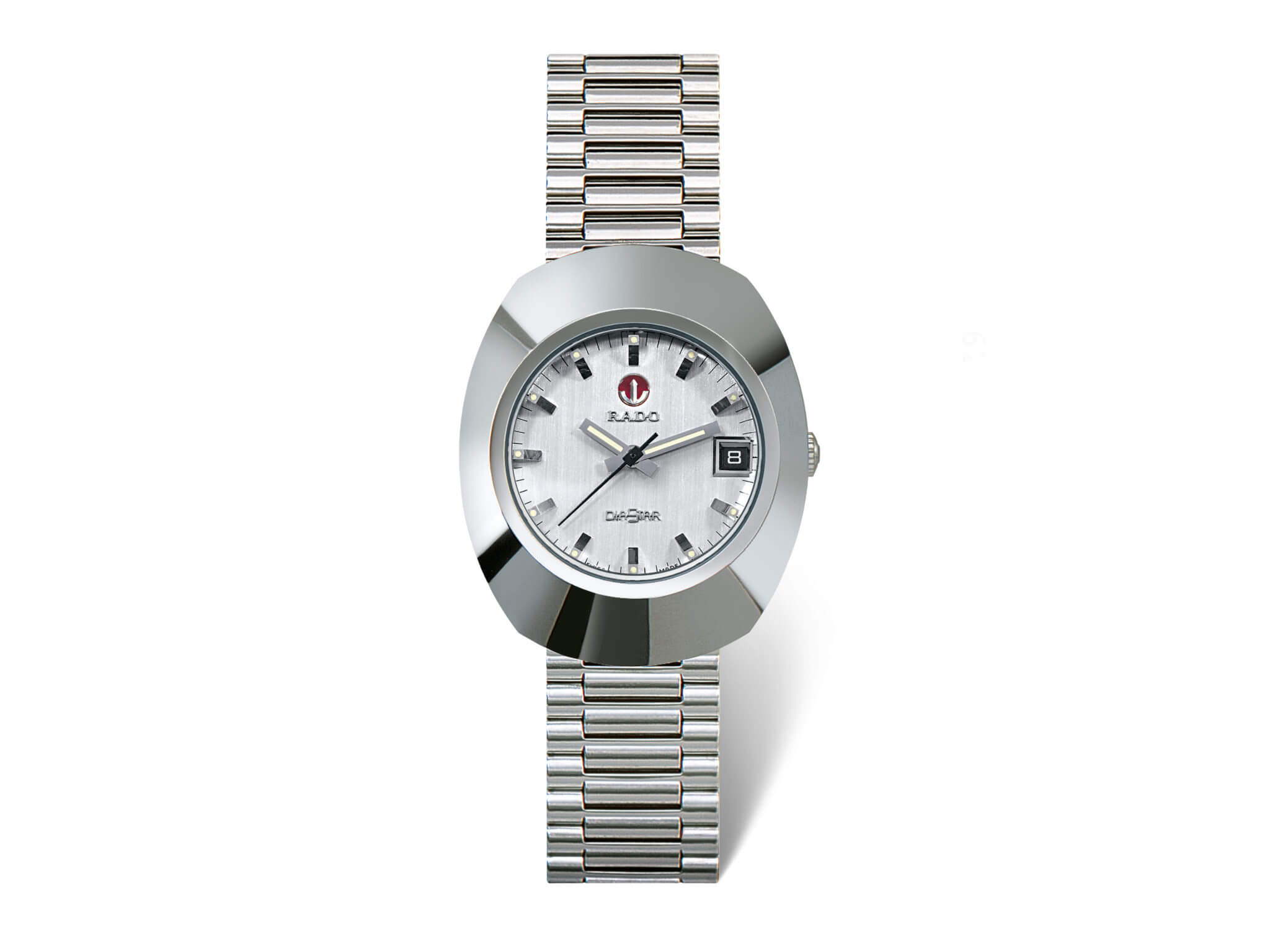
The landmark DiaStar 1 from 1962
By 1959, Rado had a presence in more than 61 countries and was especially popular in Asia and the Middle East. Original wristwatches from that era are relatively easy to come by even today, showing the popularity of the brand. However, it is difficult to acquire authentic 1950s and 1960s timepieces that are in good condition, or have all their original parts according to Thomas Gronenthal, writing for the US edition of WatchTime in 2017.
Rado must have realised that its watches were seeing a lot of use because by 1962, it debuted the DiaStar 1 to cope with the unforgiving world of the modern working person. In the early days of the wristwatch, watchmakers used to bemoan the fact that their precious creations were being placed in the perfect position to receive maximum damage. No solution was found for decades, with the first tough dive watches only appearing the 1950s, to cite just one category of watches.
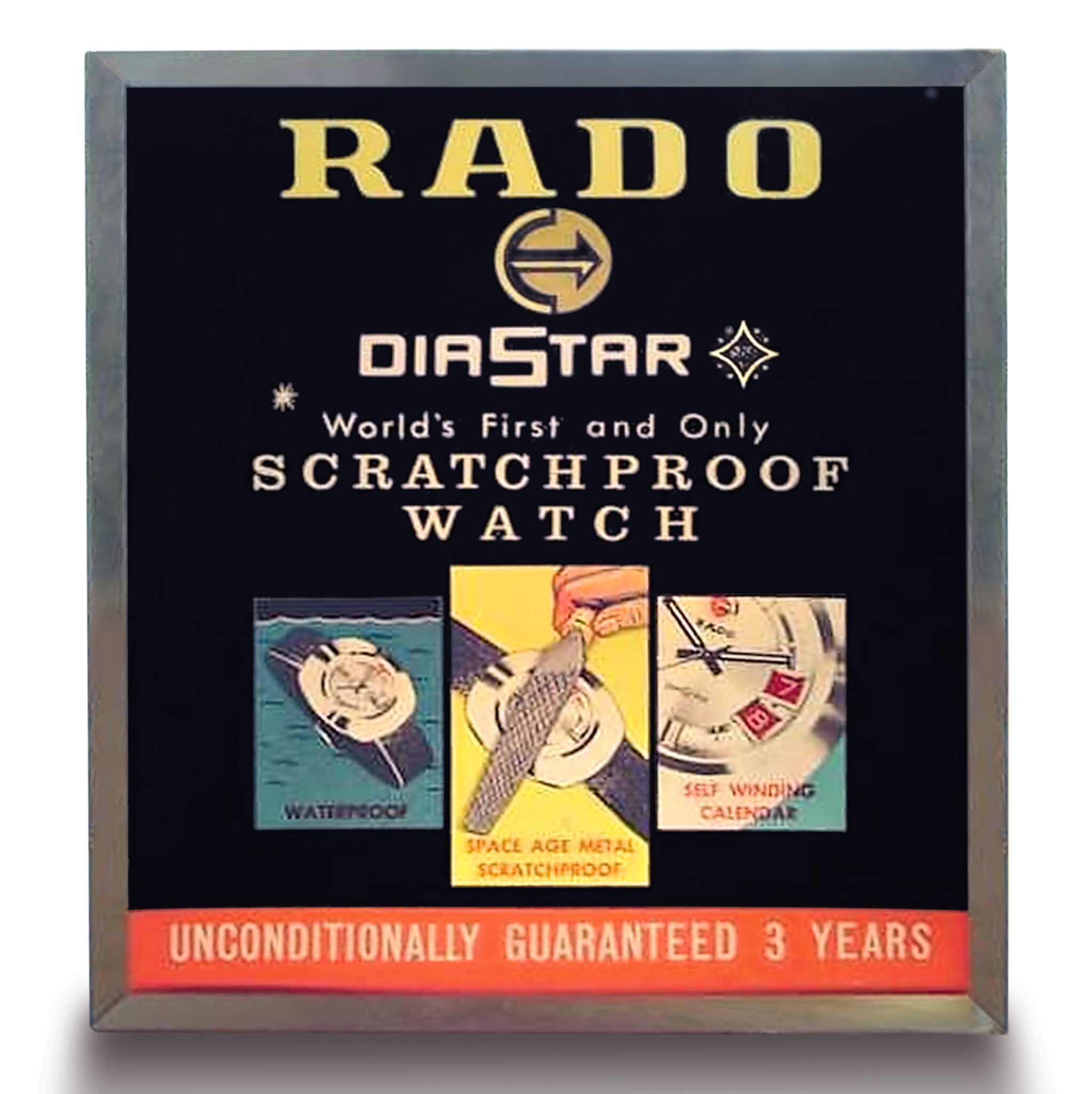
For Rado, the DiaStar 1 was a radical proposition, not just in the materials it deployed. Matching its toughness was an uncompromising oblong case shape, with a pronounced bezel that protected the face of the watch. It was a sign of the watches to come, and continues to influence the brand to this day. The DiaStar remains in production, currently under the name The Original, and Rado CEO Matthias Breschan confirms that it remains a strong seller for the brand, without much supporting advertising materials. Hodinkee reports that DiaStar 1 models that appear in sales today still retain the sheen they did when they debuted, so the use of superhard and effectively scratchproof materials has yielded positive results.
THE FUTURE SHAPES UP
Throughout the 1960s, Rado continued to produce watches with unusual and fashionable looks, many of which are now discontinued. These included the distinctive Manhattan and a variety of cushion-shaped watches, which could have been direct descendants of the DiaStar 1. The first of the now-famous gold-coloured DiaStar models appeared in 1972, and the Rado Dia 67 brought a new sense of minimalism to the brand with its edge-to-edge metalised sapphire crystal. In the 1980s, Rado hit a new high – now a part of the Swatch Group – with the Rado Integral watch. In 1986, the Integral watch brought high-tech ceramics to watchmaking and immediately received positive notices.
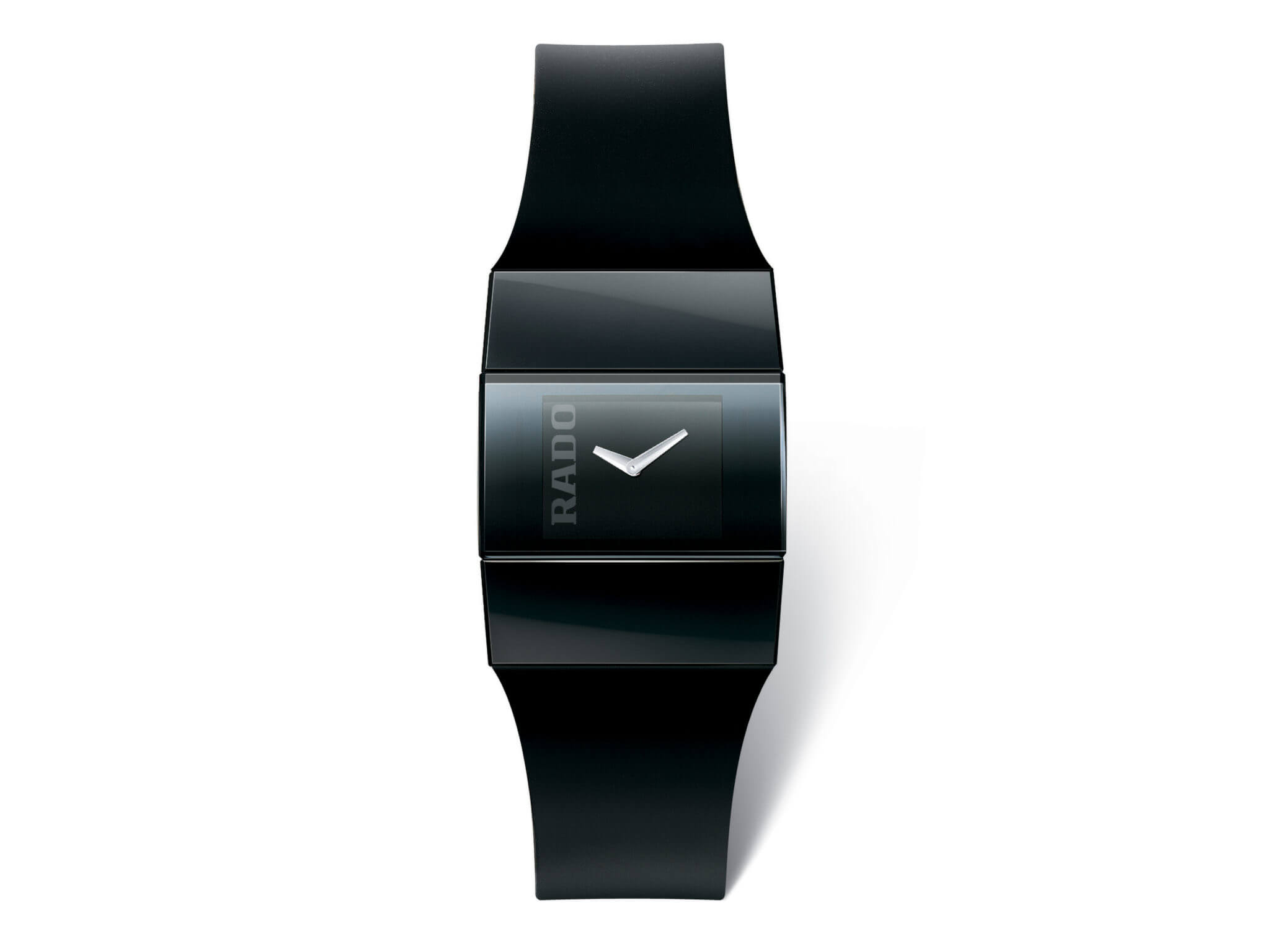
The world’s hardest watch, the V10k
It took serious work and investment to debut a new material in watchmaking for a company that produced many tens of thousands of products. No watch for Rado is simply a prospect for a select few so the integrity of any new development is key. Besides large-scale production, the other issue was just how much ceramic was in play. Not only was the case of the Integral in ceramic but so was the bracelet. Adding even more complexity here was the decision to use bi-colour ceramics – adding pigments into the mix can alter the strength of the final product, or cause production issues since it will have marginally different properties than ceramics without the colouring elements.
For the design of the watch, Rado really hit it out of the park. Generations of watch collectors came to define Rado by the way the Integral looked – black with the high shine of jewellery.
Understandably for the times, the Integral was a quartz watch through-and-through; the dimensions of the watch would require an ultrathin movement, which would have bumped up prices significantly. They still would. As it stood then, the watch was a paragon of the Swatch Group value proposition, boasting high production values for a very reasonable price.
BEYOND WHAT IS INTEGRAL
Rado definitely recognised that it had a winner on its hands; Breschan tells us that the brand even decided at that point that it would commit to including ceramic across the board, shelving any project that could not be executed in the material. A dive watch such as the Captain Cook, long out of production anyway, would have been out of the question as a result. Nevertheless, Rado knew that it could not only live on the terms of the Integral.
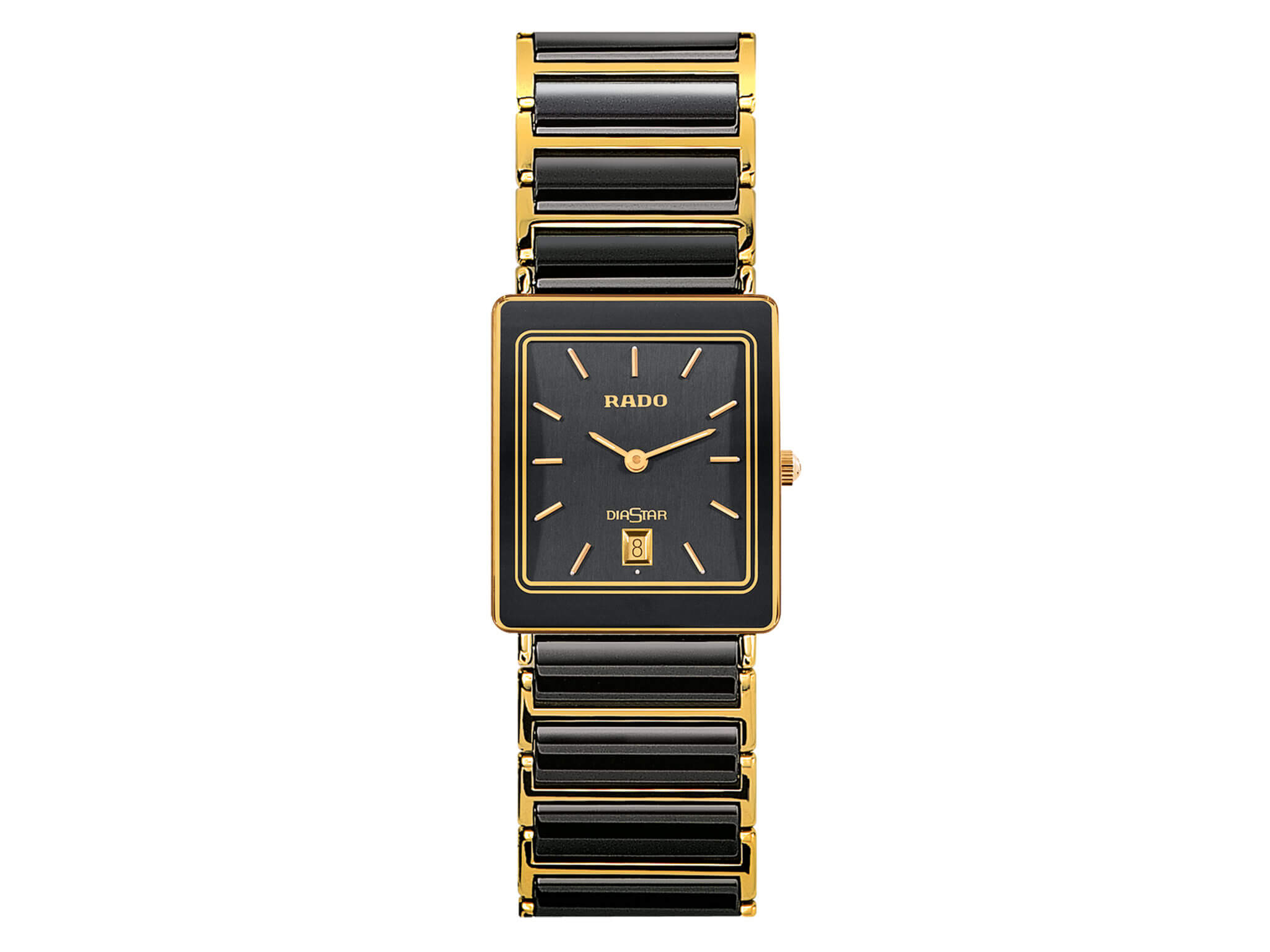
The Integral model of 1986 defined Rado for a generation
The next move came in 1991, with a white ceramic model called the Coupole; this was the world’s first white ceramic watch. Future innovations in ceramic were forthcoming, as detailed in our sidebar, and included contemporary Rado staples such as the Sintra and the Ceramica. It culminated in 2002 with the launch of the V10k, which took scratch-resistance to a new level. The watch was coated with a layer of artificial nanocrystalline diamond, giving it a hardness of 10,000 Vickers. It is still the world’s hardest watch.
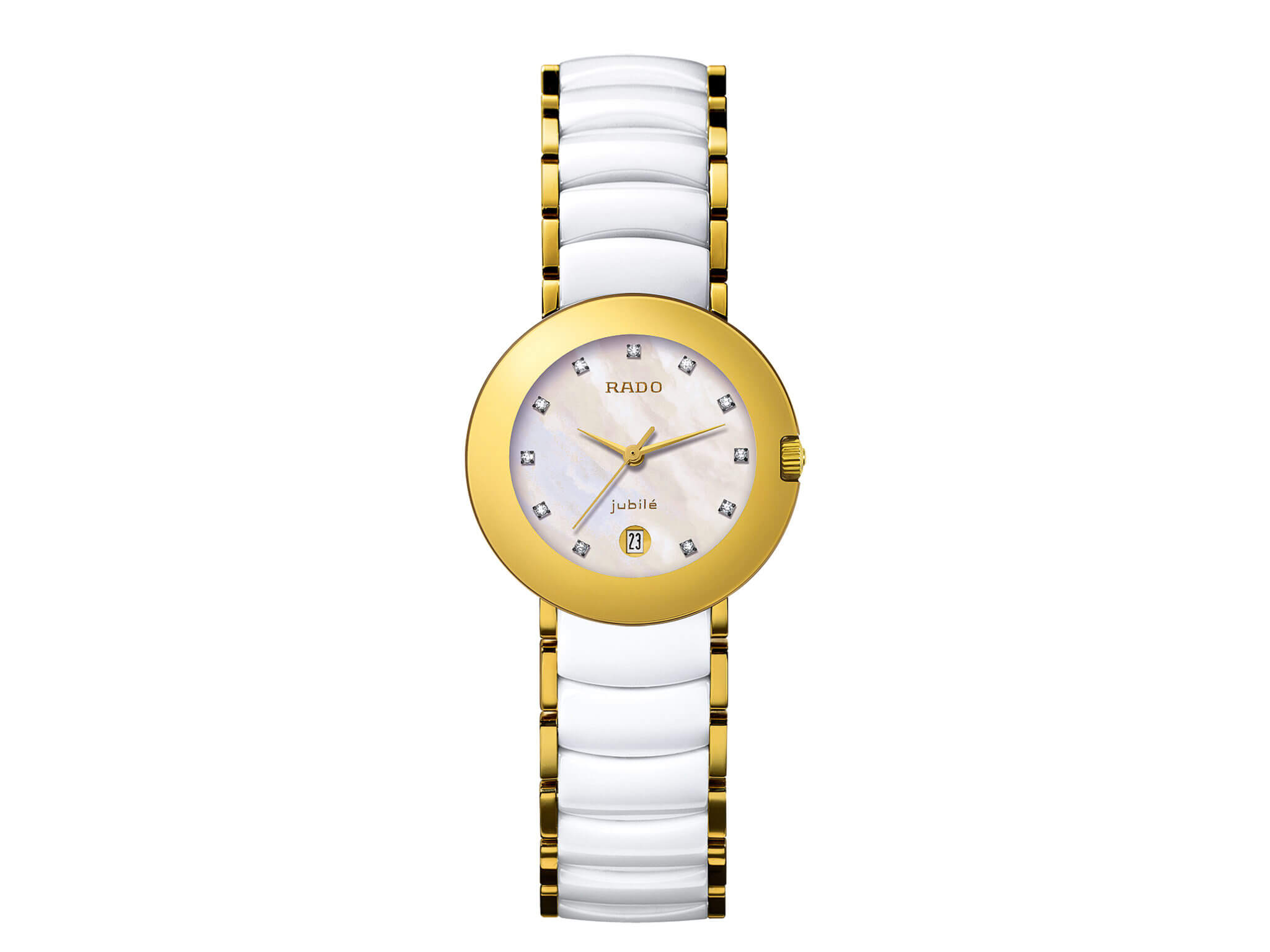
The world’s first white ceramic watch, the Coupole
This brings us squarely (no pun intended) into the contemporary era, because Rado changed tacks soon after the V10K. The challenge now was to find ways to work with new shapes, and do the sorts of things that limited the brand in the 1980s. Plenty of other brands were now using ceramic, including many in the Swatch Group that were of an altogether different class. The adoption of high-tech ceramic by brands such as Omega and Blancpain was actually a boon for Rado, which began paying dividends in the unidirectional bezel characteristic of dive watches. Here was a game where the Captain Cook watch was already well-positioned to perform well. At the same time, Rado was already working on colour solutions for its admittedly limited palette.
O CAPTAIN MY CAPTAIN
When the vintage trend took hold at most brands after the financial crisis of 2008, Rado found it had the right watch to capture the public’s interest. When the sports watch trend really took off four years ago, the Captain Cook was no longer the right watch – it was perfect. So Rado struck in 2017 with a pitch-perfect reissue of the watch – down to the 37mm size – that surprised everyone who still saw Rado as the maker of shiny black watches. The new HyperChrome Captain Cook was an immediate hit, with collectors clamouring for a larger size. Rado not only obliged with its own oversized version at 45mm, but also with a 42mm crowd-pleaser that dropped the HyperChrome name.
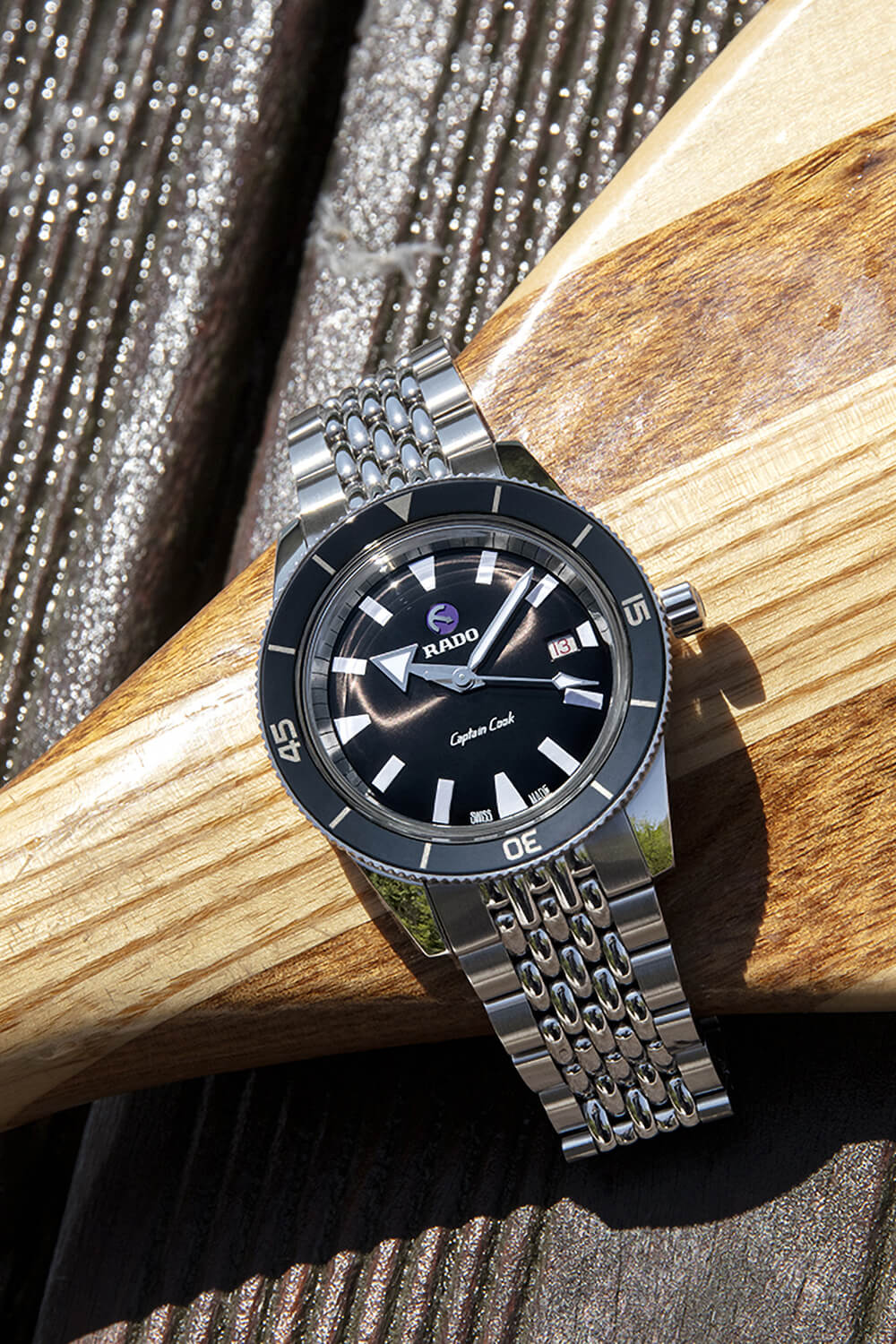
Rado Captain Cook Automatic
This is the version of the Captain Cook that finds itself on the cover, and is the focal point of Rado’s press and marketing communications. To our minds, the version of this watch on a steel bracelet at $2,800 is not only the watch for the current moment but one you could easily wear as your daily beater. With Rado’s EasyClip band system, you could swap out that beads-of-rice hybrid bracelet without a second thought and go with a leather strap. No matter the version though, all models sport a unidirectional bezel in high-tech ceramic.
Do note that the two versions at 42mm with bracelet are quite different, not only in the nature of the bracelet but also in terms of price ($2,940) due to the water-resistance (200 metres vs 300 metres). There is also a limited edition (999 pieces) that comes with both fabric and bracelet as a package, priced at $3,230, and now a bronze version with only a leather strap that is not limited, priced at $3,530. Significantly, this bronze watch is the first Rado watch to ever be offered in bronze. It is also the first such watch in this material from Swatch Group, which is quite the coup for the Lengnau brand.
As far as colourways go, Rado has deployed its expertise here to offer several variants for the Captain Cook bezel, which are matched by the dials. You can discover more on that in our Cover Watch section because we have to abruptly change gears to move the spotlight to the True Thinline collection. This is where Rado’s ability to offer ceramic in different colours comes into play.
THIS MUCH IS TRUE
Finding this much colour in a Rado collection is truly unexpected, and does bring to mind the same surprise factor when the Captain Cook watch debuted. Rado goes all-in on bright hues, citing Le Corbusier’s colour theory, which is pretty gutsy for a brand with its reputation. The new True Thinline watches are a testament to both Rado’s expertise with high-tech ceramic and its design acumen. In this story, we are looking at the standard True Thinline, and the True Thinline Les Colours Le Corbusier. Briefly, there are nine watches in this brand new collection that reference 63 colours, and four of them pepper these pages. Each one of the nine models is limited to 999 pieces.
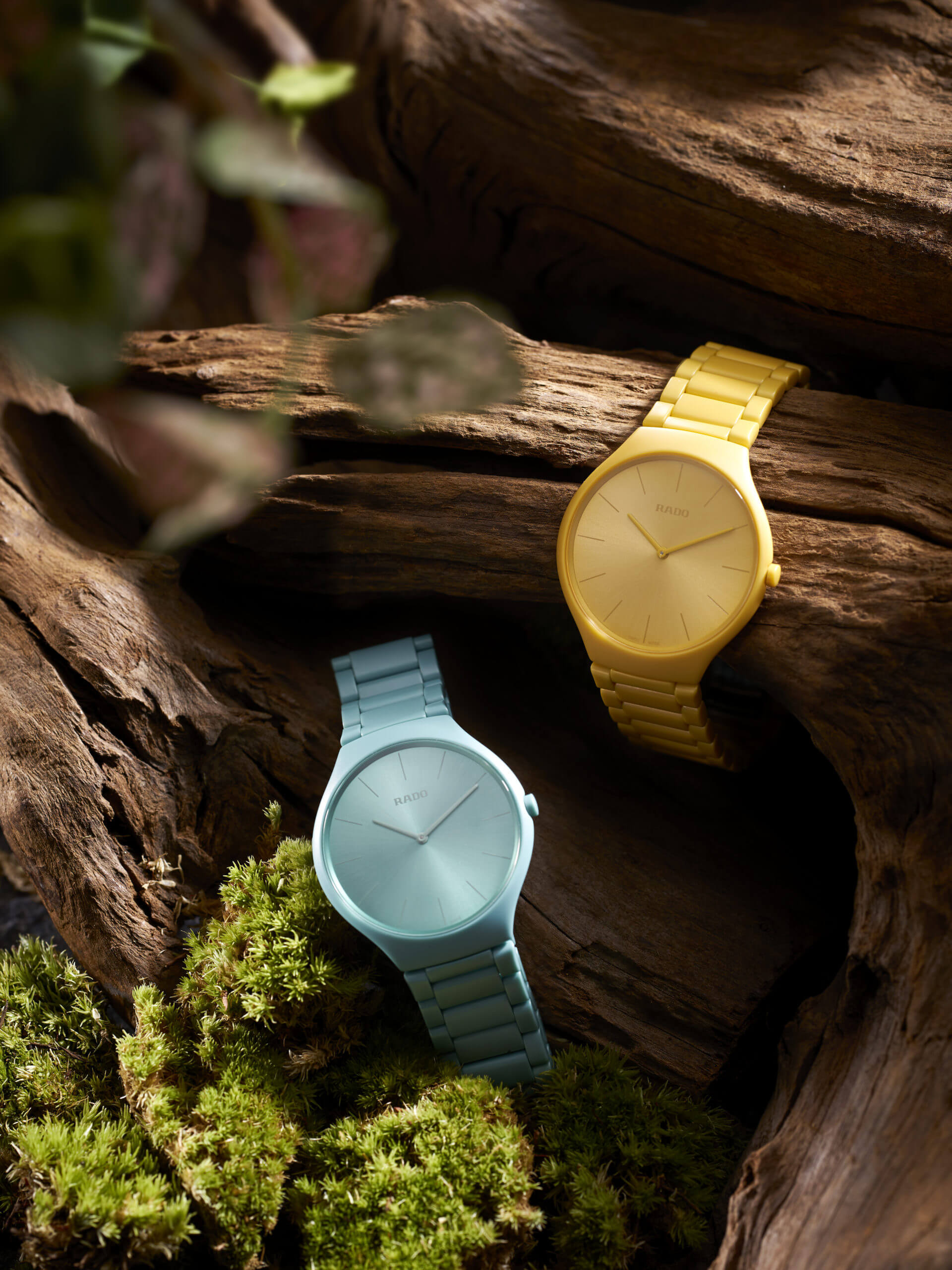
Rado True Thinline Les Couleurs Le Corbusier
Now, there is nothing new here so you need not wonder if you missed anything, if this series already grabbed your attention. It might be worth considering though if the True Thinline will have the same stature as the Captain Cook, given that both include important milestones for Rado.
To dig into it a little, the True Thinline Corbusier models exhibit a sense of playfulness and dynamism not seen elsewhere. The ultrathin 5mm cases are of the usual Rado monobloc standard, and the bracelets are highly wearable. Interestingly, Rado positions the limited edition as a unisex offering, while the standard True Thinline is meant for ladies. Looking at all of them together, it seems they could work for either gender; it really depends only on taste. The True Thinline collection is one of those recent offerings that inspired our polemic against gendered watches this issue, and this is yet another reason the entire collection might be important to take note of.
Indeed, the key take-away for watch specialists with the True Thinline Corbusier models is what they might mean for other Rado collections. Shall we expect to see an Integral in the same shade of Powerful Orange, or perhaps a bezel in Sunshine Yellow for the Captain Cook? How about a Ceramica entirely in Spectacular Ultramarine? It is certainly too early to tell, and once more is more dependant on taste than any technical constraint. If this brighter future does happen, then it will all have started with the True Thinline Les Colours Le Corbusier.
THE HARD WAY
The ceramics as used by Rado set the standard for the entire industry, so we should devote a little time to see how things work, generally speaking. It all begins with very finely powdered zirconium oxide, aluminium oxide or titanium carbide. Each grain measures only about 1/1000mm in diameter, which is about one fifth the thickness of a human hair. The powder is pressed into appropriately shaped moulds and then fired at 1,450 degrees C inside a sinter furnace. Here it condenses and emerges as scratch-resistant ceramic components, although shrinkage sometimes occurs.
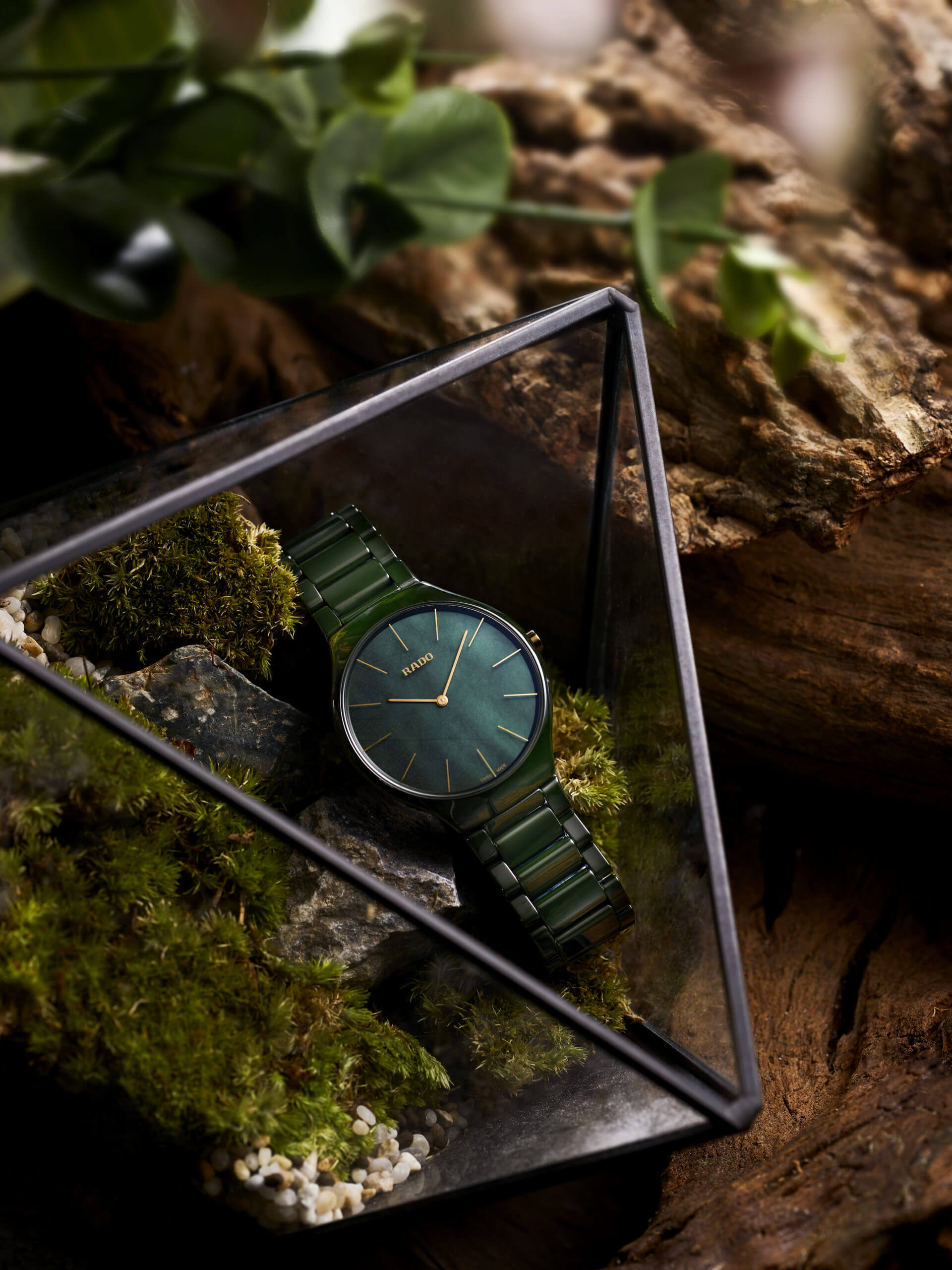
Rado True Thinline Nature
The ceramic components for Rado watches are produced for it by Comadur, the Swatch Group company that also supplies the sapphire crystals for all Swatch Group brands. The colour agent added to the mix is an extremely pure oxide that is able to achieve a broad range of colours. Things are always improving on this front, with the Rado True Thinline currently reflecting the maximum of what is possible today with coloured ceramic materials for watches. The definitive shine of ceramic is a product of polishing with diamond dust. Interestingly, the tungsten carbide that Rado once used for the DiaStar 1 is recognised as an advanced ceramic material; Rado, for its part, classifies this as a ‘Hard Metal’ and introduces it as such on its website.
MASTER OF MATERIALS
Rado calls itself the Master of Materials, and it would not be able to do this if ceramics were the entire picture. Actually, there are loads of different ceramics and Rado devotes its expertise to several, in its own words.
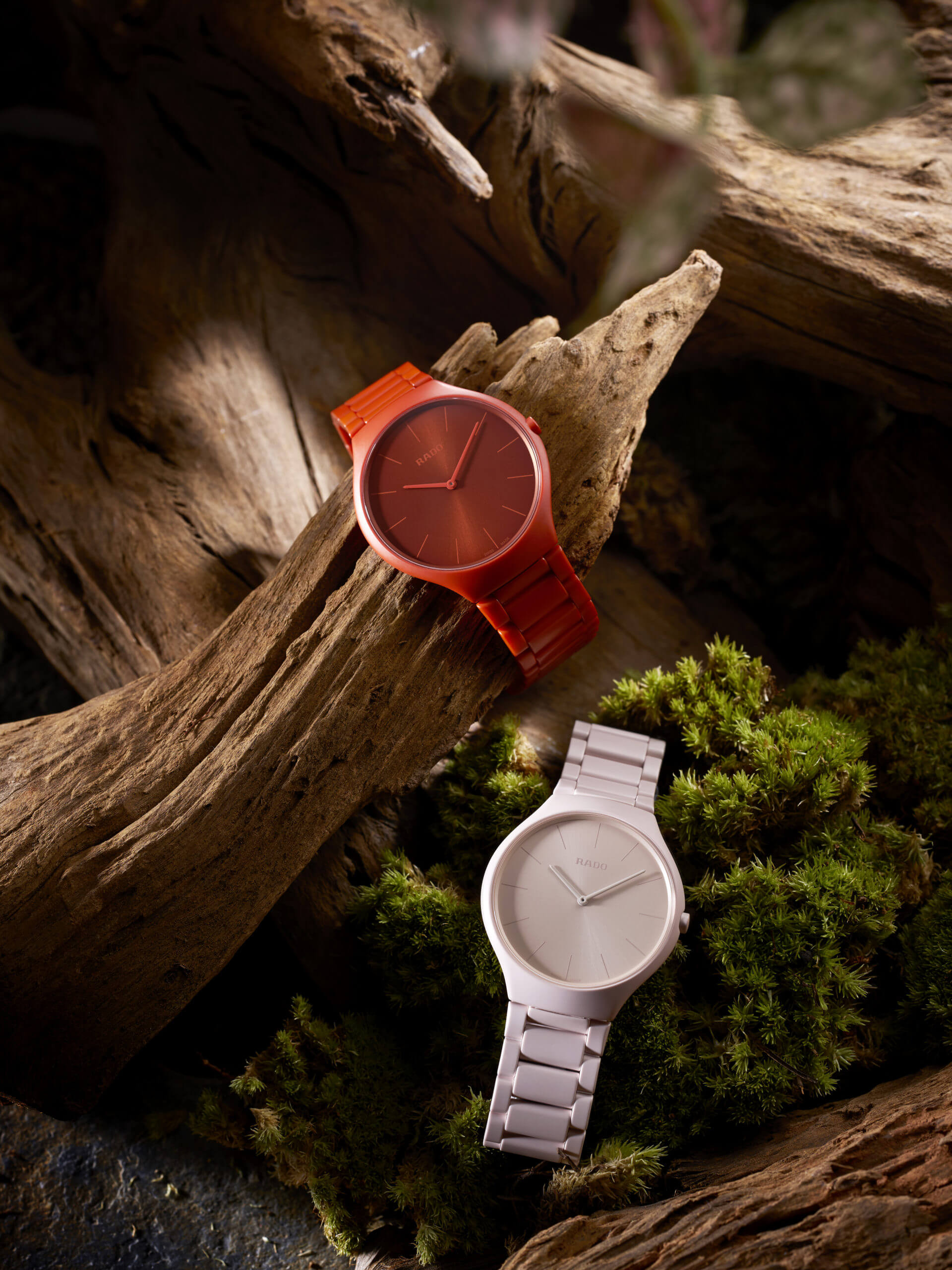
Rado True Thinline Les Couleurs Le Corbusier
High Tech Ceramic – Equal parts art and science, high-tech ceramic has been a part of the Rado story for decades. This lightweight material is scratch-resistant and hypoallergenic, and can take on matte and polished finishes.
Plasma High Tech Ceramic – This material delivers a paradoxically warm and metallic shimmer, without any metals in the mix. It is used in the HyperChrome and DiaMaster collections. Ceramos – Unlike the other ceramics described here, this one is a 90:10 blend of metal and ceramic. It is mostly found in the DiaMaster collection.




